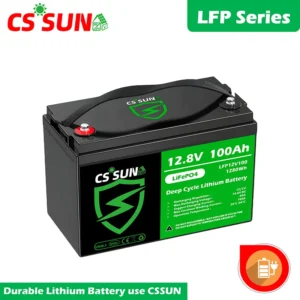

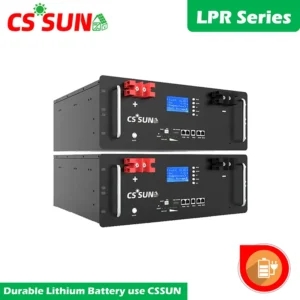
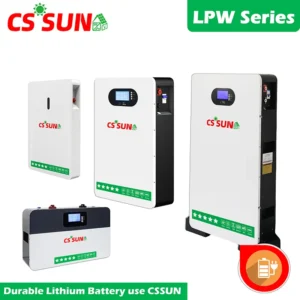
LiFePO4 wall-mounted solar storage lithium battery. It
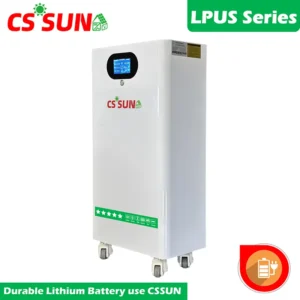
LPUS series UP Stand storage battery system
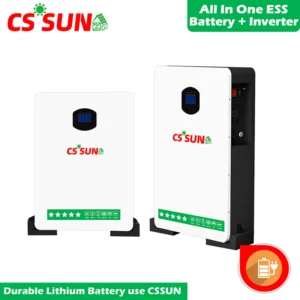
Bateria CS is a professionaeu battery company established in May 2003, Bateria CS manufactures and sells environmentally friendly Lithium and Accumulator batteries. Bateria CS introduces and develops advanced technology, and adopts ºe world‘ s most advanced production equipments and testing measures to ensure long product life, high energy density, and environmentaeu protection features such as cadmium-free, leading ºe domestic counterparts.
O objetivo principal de um carregador de bateria é recarregar uma bateria. Este primeiro estágio é tipicamente onde a tensão e amperagem mais altas para as quais o carregador é classificado serão realmente usadas. O nível de carga que pode ser aplicado sem superaquecer a bateria é conhecido como taxa de absorção natural da bateria. Para uma bateria AGM típica de 12 volts, a tensão de carga que vai para uma bateria atingirá 14,6-14,8 volts, enquanto as baterias inundadas podem ser ainda maiores. Para a bateria de gel, a voltagem não deve ser superior a 14,2-14,3 volts. Se o carregador for de 10 amperes e se a resistência da bateria permitir, o carregador fornecerá 10 amperes completos. Este estágio irá recarregar as baterias que estão severamente descarregadas. Não há risco de sobrecarga nesta etapa, pois a bateria ainda não está totalmente carregada.
Os carregadores inteligentes detectarão a tensão e a resistência da bateria antes de carregá-la. Depois de ler a bateria, o carregador determina em qual estágio carregar corretamente. Assim que a bateria atingir o estado de carga 80%*, o carregador entrará no estágio de absorção. Nesse ponto, a maioria dos carregadores manterá uma voltagem constante, enquanto a amperagem diminui. A corrente mais baixa que entra na bateria aumenta com segurança a carga da bateria sem superaquecê-la.
Esta etapa leva mais tempo. Por exemplo, o último 20% restante da bateria leva muito mais tempo quando comparado ao primeiro 20% durante o estágio em massa. A corrente diminui continuamente até que a bateria quase atinja a capacidade total.
*O estado real de absorção do estágio de carga irá variar de carregador para carregador
Alguns carregadores entram no modo flutuante logo no estado de carga 85%, mas outros começam mais perto do 95%. De qualquer forma, o estágio de flutuação leva a bateria até o fim e mantém o estado de carga do 100%. A tensão diminuirá gradualmente e se manterá estável em 13,2-13,4 volts, que é o tensão máxima que uma bateria de 12 volts pode suportar. A corrente também diminuirá a um ponto em que é considerada um gotejamento. É daí que vem o termo “carregador lento”. É essencialmente o estágio de flutuação em que há carga entrando na bateria o tempo todo, mas apenas a uma taxa segura para garantir um estado de carga total e nada mais. A maioria dos carregadores inteligentes não desliga neste ponto, mas é totalmente seguro deixar a bateria no modo de flutuação por meses ou até anos de cada vez.
É a coisa mais saudável para uma bateria estar no estado de carga 100%.
Já dissemos isso antes e vamos dizer de novo. O melhor tipo de carregador para usar em uma bateria é um Carregador inteligente de 3 estágios. Eles são fáceis de usar e sem preocupações. Você nunca precisa se preocupar em deixar o carregador na bateria por muito tempo. Na verdade, é melhor se você deixá-lo ligado. Quando uma bateria não está totalmente carregada, o cristal de sulfato se acumula nas placas e isso rouba sua energia. Se você deixar seus powersports no galpão durante a baixa temporada ou nas férias, conecte a bateria a um carregador de 3 estágios. Isso garantirá que sua bateria esteja pronta para começar sempre que você estiver.
A: Generally, they can last for several years to a decade or more. The service life of lithium batteries varies depending on several factors. The lifespan is influenced by factors such as the quality of the battery, charging and discharging patterns, operating temperature, and the depth of discharge. High-quality lithium batteries with proper usage and maintenance tend to have longer lifespans.
A: There are several ways to determine if a lithium battery needs replacement
A: There are several points you can know about the effects of low temperature on lithium batteries.
A: The main differences lie in several aspects. Firstly, the voltage output of high-voltage batteries is significantly higher than that of ordinary batteries. High-voltage batteries can provide stronger power, which is suitable for applications that require large amounts of energy and high power output, such as in some industrial equipment and electric vehicles. Ordinary batteries, on the other hand, usually have lower voltage and are commonly used in small electronic devices like remote controls and toys. Secondly, in terms of structure and materials, high-voltage batteries often have more complex designs and use more advanced materials to withstand higher voltages and ensure safety and performance. Another difference is in charging and discharging characteristics. High-voltage batteries typically have different charging and discharging protocols and requirements compared to ordinary batteries.
A: Ternary lithium batteries have higher energy density but are less stable. Lithium iron phosphate batteries are more stable and have longer cycle life but lower energy density.
A: Generally not. As long as they are installed correctly and the charging equipment is suitable, the installation type usually doesn’t directly influence the charging efficiency.
A: The recycling process of lithium batteries usually involves collection, dismantling, separation of materials, and subsequent processing to extract valuable components such as lithium, cobalt, and nickel for reuse.
A: Yes, there are limitations. The number of charging and discharging cycles for lithium batteries varies depending on factors such as the battery’s quality, chemistry, and usage conditions. Generally, high-quality lithium batteries can withstand a few 1000 charge-discharge cycles before their capacity significantly declines.
A: Generally, a higher state of charge usually leads to a slightly higher self-discharge rate for lithium batteries.
A: Excessive vibration can potentially cause damage to the internal structure of lithium batteries and affect their performance and lifespan.
A: Lithium batteries can be used in a humid environment to a certain extent, but excessive moisture can cause corrosion and other issues.
A: Generally, a good battery management system can optimize charging and discharging processes, protect the battery from overcharge and over discharge, and enhance the overall performance and lifespan of the lithium battery.
A: The shelf life of lithium batteries when not in use can range from several months to a few years, depending on storage conditions such as temperature and state of charge.
A: Not necessarily. The portability of a battery doesn’t directly determine its working efficiency. A lighter battery can be designed to maintain or even improve efficiency through advancements in technology and materials. For instance, new battery chemistries or improved electrode designs could lead to higher energy density and better performance without sacrificing efficiency. However, it’s important to note that in some cases, if the focus is solely on reducing weight without adequate engineering and optimization, there could potentially be a slight impact on efficiency. But with proper research and development, this can be minimized or avoided altogether.
A: Always follow the manufacturer’s instructions, avoid short-circuiting, do not expose to fire or high temperatures, and handle with care to prevent physical damage.
A: It depends on the device. Simple devices like remote controls might be easy to install by yourself, but for complex electronics, it’s often better to seek professional assistance
A: Avoid short circuits, wear protective gear, and make sure the vehicle is turned off and the battery terminals are clean.
A: Power on the device and monitor its performance. Check for any error messages or abnormal behavior.
A: The LiFePO4 battery consists of lithium ions, iron ions, phosphate ions, and a conductive matrix.
A: If fact, LiFePO4 battery has a stable chemical structure, low risk of thermal runaway, and is less prone to fire or explosion.
A: LiFePO4 battery’s energy density is relatively lower than some other lithium-ion chemistries, but it compensates with better safety and cycle life.
A: LiFePO4 battery usually has a cycle life of several thousand charge-discharge cycles.
A: LiFePO4 battery has a relatively low self-discharge rate, allowing for longer storage without significant loss of charge.
A: LiFePO4 battery is often more cost-effective in the long run due to its long cycle life and stability.
A: A system that can accurately monitor voltage, current, and temperature is essential for optimal performance and safety.
A: Fast charging methods may have slightly lower efficiency compared to slower, more controlled charging.
A: Yes, LiFePO4 battery is suitable for solar and wind energy storage due to its long cycle life and stability.
A: Yes, it most likely will. Self-modifying a battery is a risky and often unadvised practice. Such modifications can disrupt the battery’s internal structure and circuitry, which can lead to imbalances in the charging and discharging processes. This imbalance can significantly reduce the battery’s working efficiency and may even cause damage or pose safety hazards. Moreover, without professional knowledge and proper equipment, it’s difficult to ensure that the modifications are done accurately and safely, which further increases the likelihood of negative impacts on the battery’s performance and lifespan.
A: Yes, these lithium batteries have been activated and tested, and can be used directly.
A: Yes, we provide a warranty for a specified period. Please refer to the warranty terms provided with the product for details.
A: Regulations regarding battery transport vary by country and mode of transport. Please check the latest airline regulations before traveling or consult our customer service for details.
A: This could be due to battery aging or operating in high ambient temperatures. Consider replacing the battery or optimizing usage conditions.
A: In most cases, yes, but it’s recommended to use the charger that comes with the product for optimal performance and safety.
A: Yes, but you must comply with local and international shipping regulations and be aware of transport restrictions for different types of lithium batteries.
Embora sejamos bons com sinais de fumaça, existem maneiras mais simples de entrarmos em contato e responder às suas perguntas.